Monster of Florence
The Monster of Florence (Italian: Il Mostro di Firenze) is the name commonly used by the media in Italy for a serial killer who killed 16 people between 1968 and 1985[1] in the Province of Florence. Law enforcement conducted several investigations into the cases over the course of several years. The courts reached the conclusion that the murders were not committed by a single person but by a group of at least four perpetrators who were convicted and later became known as the "Snacks companions" (Compagni di merende). The victims were young amorous couples parked or camped in countryside areas in the vicinity of Florence during new moons. The murderers used multiple weapons, including a .22 caliber Beretta gun and knife, and in half of the cases excised sex organs from the bodies of the female victims, which appeared to be the motive for the crimes.
The Monster of Florence | |
|---|---|
| Other names | Il Mostro (The Monster), The Surgeon of Death, Il Mostro di Firenze, The Monster of Florence |
| Details | |
| Victims | 16 (sources differ) |
Span of crimes | August 21, 1968–September 7–8, 1985 |
| Country | Italy |
Date apprehended | Unapprehended |
Victims
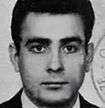

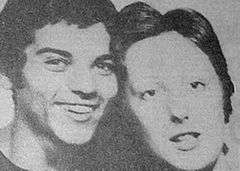
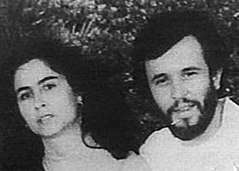
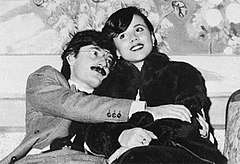
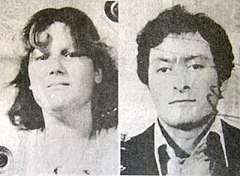
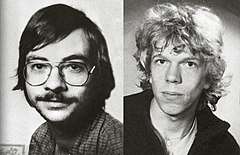
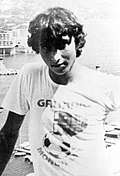
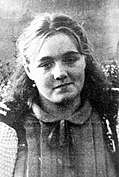
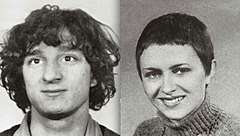
- August 21, 1968: Antonio Lo Bianco (29), mason worker, and Barbara Locci, (32) homemaker, lovers. Shot to death with a .22 Beretta in Signa, a small town to the west of Florence, while Locci's son Natalino Mele (6) lay asleep in the back seat of the car. The child woke up and, finding his mother dead, fled in fright. At 2 a.m. he arrived at a house at about two kilometers from the crime scene and knocked on the door, telling the landlord: "Open the door and let me in, I'm sleepy and my Daddy is sick in bed. Then you have to drive me home, because my Mommy and my uncle are dead in their car." Questioned by the police on how could such a young child like him walk along a dark and unpaved country road for nearly two kilometers, Natalino initially answered he had run away alone, then changed his story and stated that either his father or an uncle - a term he had used to describe his mother's lovers – had driven him to the house where he asked for help. Years later, Natalino said again that he was alone, but was too shocked to remember exactly what happened on that night. Locci, a native of Sardinia, was famous in the town because of her multiple love affairs, and had received the nickname Ape Regina (queen bee). Her older husband, an ingenuous man named Stefano Mele, was eventually charged with the murder and spent six years in jail. However, while he was imprisoned, more couples were murdered with the same gun. Several lovers of Locci's were suspected to be perpetrators of the crime and even Stefano stated on several occasions that one of them had killed her.
- September 15, 1974: Pasquale Gentilcore, barman (19), and Stefania Pettini, accountant (18), teenage sweethearts. Shot to death and stabbed in a country lane near Borgo San Lorenzo while having sex in Gentilcore's Fiat 127. They were not far from a notorious disco called Teen Club, where they were supposed to spend the evening with some friends. Pettini's corpse had been violated with a grapevine stalk and disfigured with 97 stab-wounds. Some hours before the murder, Pettini said something to a close friend about a weird man who terrified her. Another friend of Pettini's recalled that a strange man had followed and bothered the two of them during a driving lesson a few days before. Several couples of lovers who used to "park" in the same area where Gentilcore and Pettini were murdered stated that particular area was frequented by voyeurs, a pair of them acting very oddly.
- June 6, 1981: Giovanni Foggi, warehouseman (30), and Carmela De Nuccio, shop assistant (21), engaged. Shot to death and stabbed near Scandicci, where they both lived. De Nuccio's body was pulled out of the car and the killer cut out her pubic area with a notched knife. The next morning, a young voyeur, paramedic Enzo Spalletti (30), went around speaking about the murder before the corpses had been discovered. He spent three months in jail, charged with murder, before the perpetrator exonerated him by killing again.
- October 23, 1981: Stefano Baldi, workman (26), and Susanna Cambi, telephonist (24), engaged and due to be married. Shot to death and stabbed in a park in the vicinity of Calenzano. Cambi's pubic area was cut out like De Nuccio's. An anonymous person phoned Cambi's mother the morning after the murder, to "talk to her about her daughter." A few days before the homicide, Susanna told her mother that there was somebody tormenting her and even chasing her by car.
- June 19, 1982: Paolo Mainardi, mechanic (22), and Antonella Migliorini, dressmaker (20), engaged and due to be married; nicknamed Vinavil (a brand of superglue) as they were inseparable. Shot to death just after having sex in Mainardi's car on a Provincial road in Montespertoli. This time the killer did not have the time to mutilate the female victim as the road was relatively busy and several passing-by drivers testified that they saw the car parked at the side of the road with its interior light turned on. Mainardi, though seriously injured, was still alive when found. Police and ambulances were called immediately, but Mainardi died some hours later at the hospital. Mainardi probably heard or saw the killer approaching and tried to drive away but he lost control of the car and got stuck in the ditch on the other side of the road. Another reconstruction of the events suggests that, after shooting the couple, the killer drove Mainardi's car for a few meters to hide the vehicle and the corpses in a woodland area nearby, only to lose control of the car and abandoning it in the ditch where it was discovered by a driver only a few minutes later.[2]
- September 9, 1983: Wilhelm Friedrich Horst Meyer (24) and Jens Uwe Rüsch (24), German, both seniors at faculty of Fine Arts in Osnabrück, traveling in Italy to celebrate an important scholarship Meyer had just won. Shot to death in their Volkswagen Samba Bus in Galluzzo. Rüsch's long blond hair and his small build could have deceived the killer into thinking he was a female. Police suspected that they were gay lovers, based on pornographic materials found at the scene.
- July 29, 1984: Claudio Stefanacci, law student (21), and Pia Gilda Rontini, barmaid and cheerleader (18), sweethearts. The pair were shot to death and stabbed in Stefanacci's Fiat Panda parked in a woodland area near Vicchio. The killer removed the girl's pubic area and left breast. There were reports of a strange man who had been following them in an ice cream parlour some hours before the murder. A close friend of Rontini recalled that she had confided that she had been bothered by "an unpleasant man" while working at the bar.
- September 7–8, 1985: Jean Michel Kraveichvili, musician (25), and Nadine Mauriot, tradeswoman (36), lovers, both from Audincourt, France, on a camping vacation in Italy. Mauriot was shot to death and stabbed while sleeping in their small tent in a woodland area near San Casciano. Kraveichvili was killed a short distance away from the tent while trying to escape. Mauriot's corpse was mutilated. Because the killer had murdered two traveling foreigners, there was not yet a missing persons report. The killer sent a taunting note, along with a piece of Mauriot's breast, to the state prosecutor, Silvia Della Monica, stating that a murder had taken place and challenging local authorities to find the victims. A person picking mushrooms in the area discovered the bodies a few hours before the letter arrived on Della Monica's desk.
Suspects and reaction
It was not until the Scandicci murders in 1981 that the police realised the murders were connected. A newspaper article about the 1974 murder caused the police to perform a ballistics test and confirm the same gun had been used in both murders.[3] Reporter Mario Spezi named the killer "Monster of Florence". A local voyeur was arrested and held in custody until the Calenzano murders in 1981. After the 1982 murders, the police leaked false information that Mainardi had regained consciousness before dying in the hospital. Soon after, an anonymous tip called for the police to relook at the 1968 murder; the same gun had been used.[4]
The 1968 murder of Antonio Lo Bianco and Barbara Locci had been considered solved with the confession and conviction of Locci's husband Stefano Mele. Mele had been excluded as a suspect since he had been in prison during the 1974 and 1981 murders. Mele's statements in police interviews were inconsistent, shifting the blame among his Sardinian relatives and acquaintances.[5] Francesco Vinci was arrested first. He was a former lover of Locci's whose car had been found hidden on the day the false Mainardi information had been leaked. Francesco was kept in custody for over a year, even during the 1983 murders.[6] Examining magistrate Mario Rotella instead widened the net, arresting Mele's brother and brother-in-law, Giovanni Mele and Piero Mucciarini. The 1984 murders occurred when the three suspects were in custody, so the police released them.[7] Rotella focused on Francesco's brother Salvatore Vinci, himself another lover and former lodger of Barbara Locci's. Vinci's first wife had died in a fire in Sardinia, ruled a suicide although rumored to be a murder. After the final Monster murder in 1985, Rotella arrested Vinci and charged him with the murder of his wife, intending to move from there to the other killings attributed to the Monster. The trial in Sardinia instead acquitted Vinci, who walked free. By this point, chief prosecutor Pier Luigi Vigna thought the Sardinian trail spent, and wanted to look into the possibility of the gun having been picked up by an unknown party after its use in the 1968 murder. In 1989, Rotella was forced to officially clear all the Sardinian suspects and withdraw from the case.[8]
With the use of computer analysis and anonymous tips, a new suspect, Pietro Pacciani, was found. Pacciani had been convicted both for rape and domestic abuse of his two daughters, and for the 1951 murder of a man who had relations with his ex-girlfriend, for which he served thirteen years in prison. Inspector Ruggero Perugini found incriminating evidence, such as similarities between the 1951 murder and the Monster killings, as well as a reproduction of Primavera by Botticelli and another painting thought to be by Pacciani. They only physical evidence against Pacciani was an unfired bullet of the same brand as the Monster's, found in Pacciani's garden at the end of a lengthy search.[9]
Pacciani was controversially convicted in his initial trial in 1994. At his appeal, the prosecutor took Pacciani's side, citing lack of evidence and poor police work. As a result, Pacciani was acquitted and released in 1996. Perugini's successor Michele Giuttari tried to introduce new witnesses at the final hour, but was denied.[10] A new trial for Pacciani was ordered by the Supreme Court, but he died in 1998 before it could begin. Instead, two alleged accomplices were tried, Mario Vanni and Giancarlo Lotti. Vanni had been a witness at Pacciani's trial, where he famously claimed the two of them merely to be "Picnic Companions" (Compagni di Merende), a term that entered Italian vernaculum. Lotti had been one of Giuttari's surprise witnesses, claiming to have seen Pacciani and Vanni commit the 1985 murder. After many more sessions of questioning, he had begun to incriminate himself in the murders as well. Both were convicted and condemned to life imprisonment, though their sentences have been widely criticized and many consider the murders to be unsolved.[11]
In 2001, Giuttari, now chief inspector for the police unit GIDES (Gruppo Investigativo Delitti Seriali, Investigative Group for Serial Crimes) announced that the crimes were connected to a satanic cult allegedly active in the Florence area. In his testimony, Lotti had spoken of a doctor who had hired Pacciani to commit the murders and collect the genitalia of the women for use in rituals. Giuttari justified this partly on the discovery of a pyramidal stone near a villa where Pacciani had been employed. The stone, Giuttari suggested, was indicative of cult activity. Critics, such as Spezi, found this idea laughable, given that such stones are commonly used as doorstops in the surrounding area.[12] The villa was searched, but nothing was found.[13]
Giuttari, the chief prosecutor of Perugia Giuliano Mignini and blogger Gabriella Carlizzi speculated that a pharmacist, Francesco Calamandrei, and a deceased physician from Perugia, Francesco Narducci had been involved in the secret society ordering Pacciani and the others. Calamandrei was put on trial while Narducci's body was exhumed. In the end, Calamandrei was completely exonerated and nothing incriminating was found regarding Narducci.[14] During the process, journalist Mario Spezi, was arrested by Mignini. Spezi had been investigating his own favored suspect, a son of Salvatore Vinci. Mignini claimed he did so to obstruct the investigation into Calamandrei and Narducci's sect, to which he claimed Spezi belonged. After international outcry, Spezi was set free, his arrest declared illegal. Giuttari and Mignini were indicted for abuse of office. GIDES was dissolved, and no active investigation of the Monster of Florence remains.[15]
Italian magazine Tempi published an article on 23 May 2018 suggesting that the Zodiac Killer and the Monster of Florence are the same person: Giuseppe 'Joe' Bevilacqua, an Italian-American.[16] In a Tempi article published on 13 June 2018, the author offers an explanation on how to decipher the Zodiac Killer's infamous cryptograms.[17]
Books, film and television
- The Monster of Florence, a 1983 non-fiction book by Mario Spezi, was the basis for a 1986 Italian film of the same name written and directed by Cesare Ferrario, and co-written by Fulvio Ricciardi.
- L'assassino è ancora tra noi ('The Murderer Is Still Free Among Us'), an Italian giallo loosely based on the case, was filmed soon after one of the murders and also released in 1986. It was written and directed by Camillo Teti, and co-written by Giuliano Carnimeo and Ernesto Gastaldi.[18][19][20]
- Paolo Frajoli and Gianni Siragusa's 28° minuto (1991) is a drama starring Corinne Cléry and Christian Borromeo inspired by the case.
- The 1996 book The Monster Of Florence by Magdalen Nabb doubted Pacciani as Il Mostro and was based on actual and extensive case documents. Although the book is a work of fiction, Nabb states that the investigation in the novel was real and the presentation as fiction was a protective measure.
- The 1999 novel Hannibal, the 2001 film adaptation, and the television adaption have all used the Il Mostro case as the basis for a sub-plot of the scenes set in Florence. Thomas Harris visited Florence and attended Pacciani's trial while researching the book. In the novel, supporting antagonist Inspector Rinaldo Pazzi (based on Ruggero Perugini)[21] was professionally disgraced when he arrested the wrong man for the Il Mostro murders. In scenes that were cut from the film before its release, a janitor at the Palazzo Vecchio, who witnesses Hannibal Lecter (Anthony Hopkins) murdering Chief Inspector Rinaldo Pazzi (Giancarlo Giannini) before fleeing the city, is revealed to be Il Mostro. Although the sub-plot involving Il Mostro was removed entirely from the completed film, the deleted scenes are included as an extra feature on the DVD.[22] In the third season of the television series, it is implied that Hannibal himself (Mads Mikkelsen) was Il Mostro.
- The 2008 book The Monster of Florence: A True Story by Douglas Preston and Mario Spezi casts doubts on the culpability of Pacciani as Il Mostro. Writer/producer Christopher McQuarrie purchased the screen rights to the book.
- In 2009, a six-part television film, Il mostro di Firenze, was produced and broadcast by Fox Crime.
- The 2011 e-book The True Stories of the Monster Of Florence by Jacopo Pezzan and Giacomo Brunoro (April 2011) gives a detailed account of all the murders and the different investigative theories.
- The 2012 book Delitto degli Scopeti – Giustizia mancata[23] ('The Scopeti Crime – Failed Justice'), written by lawyer Vieri Adriani,[24] Francesco Cappeletti, and Salvatore Maugeri, reanalyzes and reconstructs the final pair of murders (which took place in the town of Scopeti), of French tourists Kraviechvili and Mauriot. The book exposes missteps and procedural errors in the investigation.
- In "Il Mostro", the second episode of Season 2 of the television series Criminal Minds: Beyond Borders, the Monster of Florence is identified as a surgeon (played by Paul Sorvino). Suspected of being the Monster after the murders, he left Florence and continued to kill elsewhere in Europe, and in Asia. Now terminally ill, he returns to Florence and manipulates his son (played by Luca Malacrino), the product of an incestuous relationship between the Monster and his own sister, into becoming a copycat killer.
References
- Lohr, David. "The Monster of Florence". Crime Library. p. 10. Archived from the original on 2014-04-03.
- Pezzan, Jacopo; Brunoro, Giacomo (2011). The True Stories Of The Monster Of Florence. LA CASE ISBN 978-88-905896-9-0
- Preston, Douglas; Spezi, Mario (2013). The Monster of Florence. Grand Central Publishing. pp. 17–18.
- Preston, Douglas; Spezi, Mario (2013). The Monster of Florence. Grand Central Publishing. pp. 45–47.
- Preston, Douglas; Spezi, Mario (2013). The Monster of Florence. Grand Central Publishing. pp. 48–49, 62–63.
- Preston, Douglas; Spezi, Mario (2013). The Monster of Florence. Grand Central Publishing. pp. 64–65, 73–74.
- Preston, Douglas; Spezi, Mario (2013). The Monster of Florence. Grand Central Publishing. pp. 80–92, 104–105.
- Preston, Douglas; Spezi, Mario (2013). The Monster of Florence. Grand Central Publishing. pp. 116–119.
- Preston, Douglas; Spezi, Mario (2013). The Monster of Florence. Grand Central Publishing. pp. 120–125, 132–133.
- Preston, Douglas; Spezi, Mario (2013). The Monster of Florence. Grand Central Publishing. pp. 147–151.
- Preston, Douglas; Spezi, Mario (2013). The Monster of Florence. Grand Central Publishing. pp. 153–159.
- Preston, Douglas (2006). The Monster of Florence: A True Crime Story, The Atlantic, July/August 2006 issue; URL accessed May 1, 2017
- Preston, Douglas; Spezi, Mario (2013). The Monster of Florence. Grand Central Publishing. pp. 160–164.
- Preston, Douglas; Spezi, Mario (2013). The Monster of Florence. Grand Central Publishing. pp. 206–210, 215–219, 309–313.
- Preston, Douglas; Spezi, Mario (2013). The Monster of Florence. Grand Central Publishing. pp. 275–278, 301–302.
- https://www.tempi.it/il-mostro-di-firenze-e-zodiac/
- https://www.tempi.it/il-mostro-di-firenze-e-zodiac-ecco-la-decifrazione-dei-codici/
- Capolino, Gabriele (5 January 2011). "George Clooney sarà il protagonista de Il mostro di Firenze". cineblog.it (in Italian). Cineblog. Retrieved 15 January 2017.
- Gasparroni, Marta (28 April 2014). "Il mostro di Firenze diventa un film con George Clooney produttore". cinema.excite.it (in Italian). Excite. Retrieved 15 January 2017.
- Facchin, Andrea (28 April 2014). "The Monster of Florence, il regista Christopher McQuarrie a Firenze per alcuni sopralluoghi". bestmovie.it (in Italian). Best Movie. Retrieved 15 January 2017.
- Preston, Douglas; Spezi, Mario (2013). The Monster of Florence. Grand Central Publishing. p. 120.
- "Hannibal". 9 February 2001 – via IMDb.
- "Il delitto degli Scopeti" (in Italian).
- https://www.linkedin.com/in/vieri-adriani-2b762084
External links
| Wikimedia Commons has media related to Monster of Florence. |
- The Monster of Florence - a detailed and accurate account of all the facts and theories behind the case
- "The Monster of Florence", TIME
- A shorter account on Douglas Preston's narrative can be found online: "The Monster of Florence", The Atlantic
- A Map of the murders can be found online
- 2004 interview with the author Magdalen Nabb detailing her research on the case and Mario Spezi